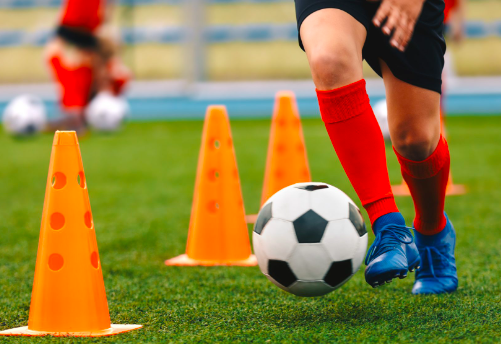
The 5 stage return to play protocol
In the world of sports, the return to play phase is a crucial, determining not only the fate of individual athletes but also influencing the overall performance of a team. As we look into player rehabilitation, a 5-phase framework takes the spotlight, form high control where the primary focus is the players confidence to high chaos where the athlete is prepared for ‘worst case scenario’.
This article explores the application of the 5 stage model outlined in the paper by Teberner (2019), offering a glimpse into the versatility of rehab through a sample chronic load progression for a central defender recovering from a hamstring injury with a six-week rehabilitation period.
Let’s have a look!
Delicate Balance in Athlete Rehabilitation
In sports rehabilitation, the process of returning to play is a journey marked by challenges and strategic decisions. One critical aspect is the balance practitioners must strike when considering the early reintegration of athletes into training and match play after an injury. While the return of key players undoubtedly benefits the team, it is accompanied by an increased risk of re-injury. This is a complex challenge, demanding a combination of evidence and clinical experience to guide decision-making during the process.
Quantifying and monitoring training load is key in this process, playing a big role in effectively managing the risk of reinjury. When clinicians approach rehabilitation comprehensively, they not only focus on the measurable aspects of running load progression but also delve into the sport specific movement in competition.
The holistic outlook acknowledges the highly variable, spontaneous, and unanticipated movements that unfold in conditions of ‘chaos,’ mirroring the unpredictable nature of the sport.
The proposed framework, drawing from over a decade of experience in rehabilitation and return to play within the demanding English Premier League football environment, strategically transitions from high control to high chaos, offering a dynamic approach to athlete recovery.
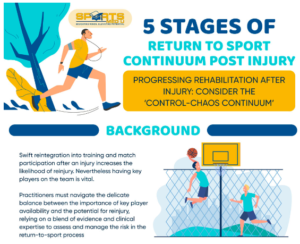
Precision in Early Rehabilitation – High Control Phase
In the initial stages of athlete return to play, the ‘High Control’ phase focuses on return to running with an emphasis on precise control over running speeds and loads. This phase aims to enhance player confidence while minimising soft tissue impact.
The approach begins by identifying injury-specific characteristics, for example addressing factors like speed progression for hamstring injuries or passing volume for groin injuries, while also factoring in individual elements such as player position and playing style.
During the early return to running, the primary objective is to gradually increase running volume at lower speeds, restricting exposure to high-speed running and minimising musculoskeletal demands. Linear running at lower speeds is preferred to mitigate the magnitudes of high acceleration and deceleration forces, ensuring a safer process.
The integration of sport-specific tasks, particularly those involving a ball, is approached cautiously to reduce movement variability during this phase. A strategic manipulation of work-to-rest ratios becomes a tool to facilitate appropriate energy system development.
Control in Dynamic Environments – Moderate control phase
In this phase the focus lies on developing a some level of control amidst the dynamic and somewhat chaotic nature of change of direction with the ball. The primary objective is to prepare an environment that challenges players to adapt to varying acceleration and deceleration demands while dribbling the ball. The approach involves a gradual integration of directional changes, deliberately sacrificing some control initially to drive adaptability.
A key element of the training strategy is to strategically decrease task constraints, allowing players to navigate through the drill without much cognitive overload. This intentional reduction in control aims to enhance explosive distance, measured by the rapid acceleration and deceleration over short distances (e.g., 2 to 4 m/s in less than 1 second). The progression aligns with the player’s pre-injury training demands, ensuring a systematic and measured approach.
Moreover, the program emphasises heightened engagement in both linear high-speed running (60%–70% maximal speed) and change of direction drills. Incorporating these elements, with and without the ball, gives a dual purpose of promoting greater movement variability and advancing the overall training demands.
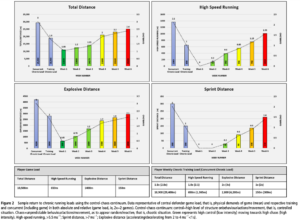
Chaos on the training Pitch – Controlled chaos phase
The 3rd phase is the controlled chaos. The primary aim is to implement a football-specific weekly structure that amplifies game-specific demands to help transition through the return to play stages. Mainly focusing on coordinating a transition from controlled environments to chaotic scenarios by introducing movements with unanticipated actions. Fitness development is tailored, emphasising sport-specific elements and progressively advancing from controlled situations to heightened levels of chaos.
The strategic design of the weekly plan is geared towards overloading game scenarios, including both ‘intensive’ and ‘extensive’ football sessions to enhance training specificity.
‘Intensive’ sessions intentionally stress the musculoskeletal system and specific energy systems through components such as acceleration, deceleration, and change of direction within confined areas. Reactive passing, dynamic movement, and position-specific acceleration/deceleration exercises are integrated to replicate the explosive movements witnessed in real game scenarios.
On the other hand, ‘extensive’ football sessions mirror typical match demands, utilising larger areas to achieve higher speeds and cover greater distances during training.
Drill prescriptions progressively introduce running at higher speeds (>65%–80% maximal speed), incorporating aerobic power interval runs to specifically target the required energy systems.
Return to high speed running – Moderate Chaos Phase
As athletes advance through the rehabilitation process, the ‘Moderate Chaos’ phase aims to increase high-speed running within a moderately chaotic environment characterised by unpredicted movements. This phase strategically incorporates pass and move drills as well as specific pattern of play exercises to simulate dynamic game scenarios. The primary goal is to intensify high-speed running loads, developing adaptability to diverse in-game situations.
High-speed running loads are increased in both controlled and chaotic settings, promoting the player’s ability to navigate unpredictability. Extensive sessions specifically target high-speed running (>75% maximal speed), introducing subtle directional changes and progressively increasing sprint distances based on the player’s relative match demands. This approach decreases abrupt ‘spikes’ or acute increments in load, prioritising a gradual and controlled progression.
The integration of pass and move drills, escalating in specificity, along with pattern of play exercises, serves a dual purpose by addressing and advancing technical skill progression. As a result, the accumulated total weekly distance covered aligns with typical training levels, reflecting a comprehensive approach to conditioning and skill development during the ‘Moderate Chaos’ phase.
The final return to sport stop – High Chaos Phase
The 5th and final stage of return to play focuses on reinstating players to relative weekly training demands while incorporating drills designed to challenge worst-case scenarios marked by high speed and “chaos”. Technical considerations become paramount, encompassing passing, crossing, and shooting across short, mid, and long ranges, alongside elements of jumping, heading, and tackling.
In this final phase, the emphasis shifts towards position-specific conditioning, mirroring game intensity with training volumes aligned to the player’s pre-injury outputs. Specialised speed and speed-endurance drills are integrated to prepare players for in-game activities, where the speed and direction of the pass dictate the player’s movement speed.
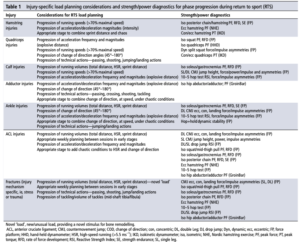
The full picture
The rehabilitation framework presented here highlights the balance required in the athlete’s journey to full sport participation during the return to play stages.
- The precision in early rehabilitation, marked by the High Control phase, emphasises return to running with a focus on minimising soft tissue impact while gradually increasing running volume. This phase prioritises injury-specific characteristics and individual player elements, setting the foundation for confidence-building.
- The transition to the Moderate Control phase introduces controlled chaos, deliberately sacrificing some control to enhance adaptability during change of direction with the ball. This phase decreases task constraints and promotes movement variability, aligning with pre-injury training demands while progressing explosive distance.
- The Controlled Chaos phase represents a shift toward sport-specific scenarios, overloading game demands in both intensive and extensive football sessions. It strategically introduces chaos through unanticipated actions, stressing musculoskeletal systems and energy systems in a controlled environment.
- The subsequent Moderate Chaos phase advances high-speed running within a moderately chaotic setting, incorporating pass and move drills to simulate dynamic game scenarios. This phase aims to intensify high-speed running loads, promoting adaptability to diverse in-game situations while addressing technical skill progression.
- Finally, the High Chaos phase focuses on reinstating players to relative weekly training demands, incorporating drills designed to challenge worst-case scenarios of high speed and chaos. This phase prioritises position-specific conditioning and technical considerations, mirroring game intensity and preparing players for in-game activities.
Overall, the framework strategically progresses from a highly controlled rehabilitation phase to a dynamic and chaotic environment, reflecting an in depth approach to athlete recovery and preparation for the unpredictable nature of competitive sports.
Sign up to our free newsletter to get fun infographics of sports medicine research
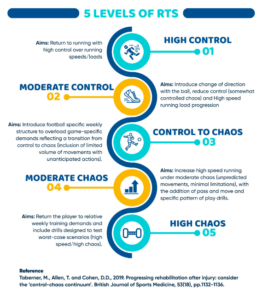
Sources:
- Taberner, M., Allen, T. and Cohen, D.D., 2019. Progressing rehabilitation after injury: consider the ‘control-chaos continuum’. British Journal of Sports Medicine, 53(18), pp.1132-1136.



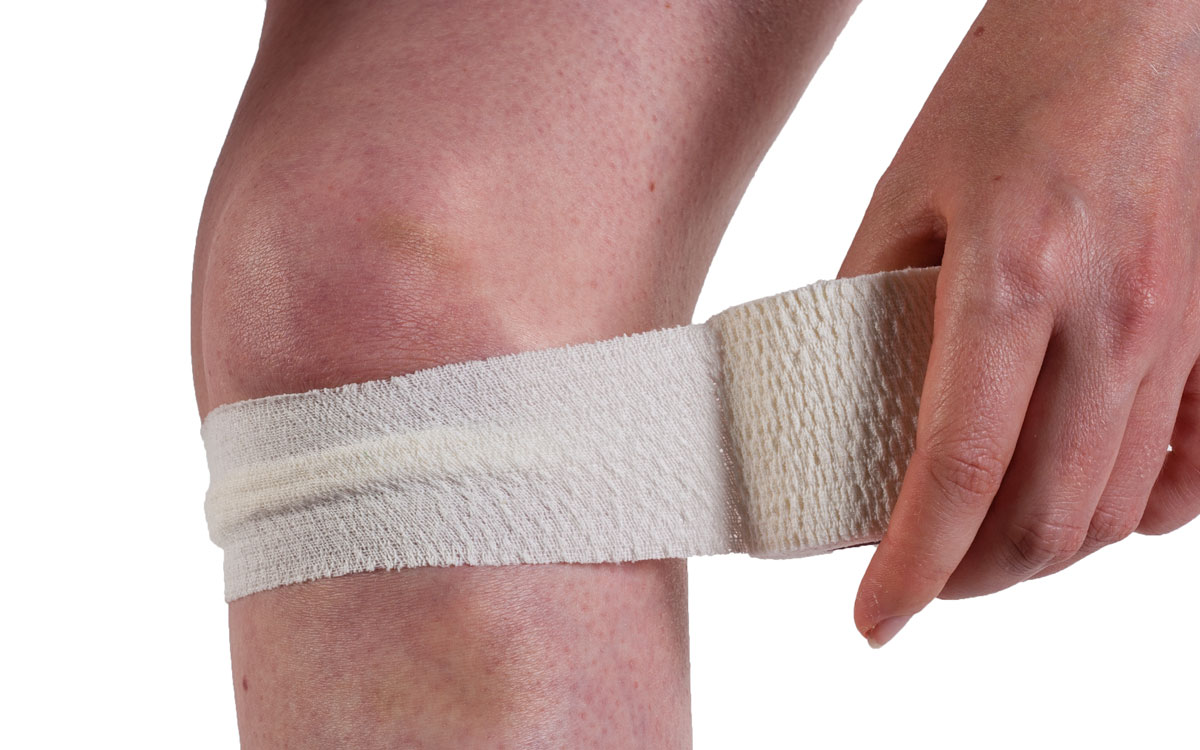
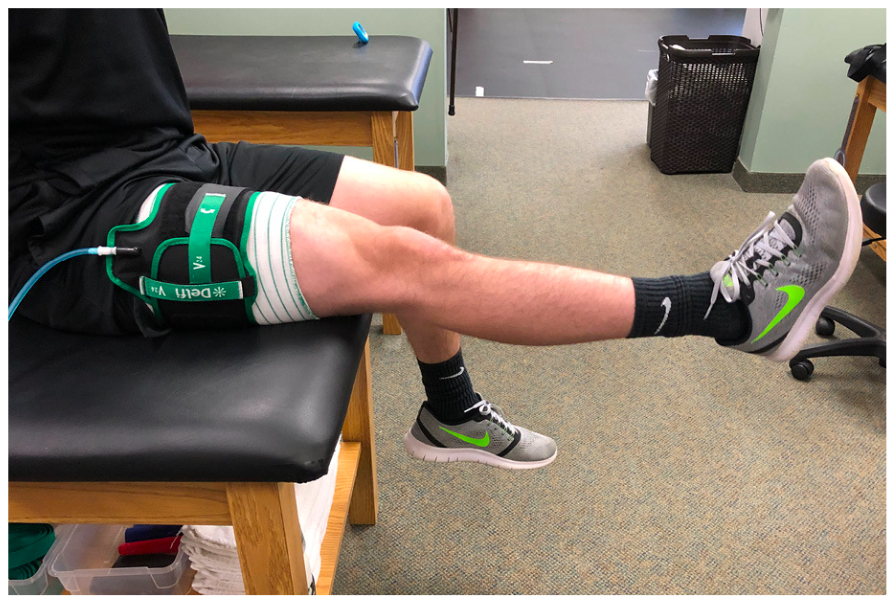
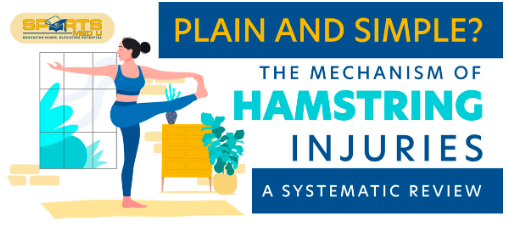
Leave a Reply